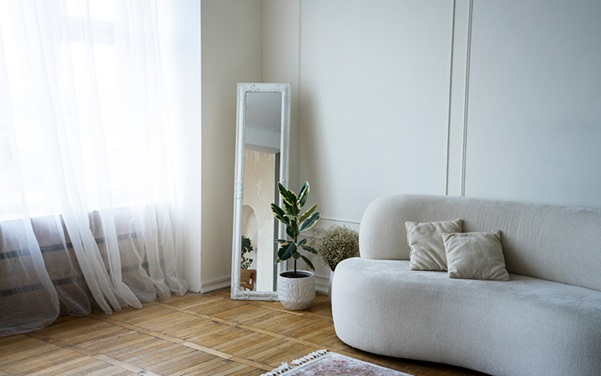A cluttered home can mirror a cluttered mind. In Singapore, where compact living spaces are the norm, homeowners have increasingly turned to a minimalist approach in pursuit of calm and control. The appeal goes beyond aesthetics—it’s about fostering mental clarity and emotional balance. Through the lens of a Singapore interior design firm, we explore how minimalism actively supports mental wellness at home.
Neutral Colour Palettes Foster Calm
Minimalist interior design prioritises simplicity in colour schemes. Shades like white, beige, grey, and muted earth tones dominate for a reason—they promote calm. Interior firms use these palettes to create visual softness, reducing overstimulation and allowing the eyes to rest. By eliminating harsh contrasts or bold splashes of colour, the home becomes a retreat from daily mental noise. This visual consistency helps anchor focus and reduce anxiety, particularly in fast-paced urban environments.
Clear Surfaces Encourage Mental Clarity
Designers in Singapore understand the link between cluttered surfaces and mental distraction. Countertops, coffee tables, desks, and dressers are carefully curated—or left bare altogether—to reflect intentional living. When everything has its place and visual chaos is removed, the mind is less burdened by decision fatigue. Clear surfaces signal a finished space and reduce the subconscious stress of untidiness.
Functional Layouts Enhance Flow
Minimalist homes benefit from layouts that prioritise movement and spatial logic. Interior design firms in Singapore craft floor plans that allow for seamless transitions from one activity to another. This avoids physical bottlenecks and mental disorientation. A space where furniture is positioned with purpose—not just for looks—helps create an intuitive living experience. When navigation becomes effortless, stress levels drop, and daily routines feel smoother.
Storage Solutions Reduce Visual Stress
A core strategy behind minimalist design is concealed storage. Interior firms integrate built-in wardrobes, hidden shelving, and under-bed compartments to reduce the need for visible storage. When items are stored out of sight, the environment immediately feels more serene. It’s a psychological trick—when fewer items are seen, the brain registers the space as more organised and peaceful. Clever storage reduces the chance of visual overload without sacrificing functionality.
Natural Light Boosts Mood
Maximising natural light is another design element that contributes to mental wellness. Minimalist interiors often feature large windows, glass panels, or mirrors to reflect sunlight. This not only enlarges the perception of space but also promotes better sleep and mood regulation. Singapore interior designers frequently position furniture and design elements to make the most of daylight, reducing the reliance on artificial lighting that can feel harsh and fatiguing over time.
Multi-Purpose Furniture Minimises Decisions
Minimalist interior design often involves multifunctional pieces—sofas that transform into beds, coffee tables with hidden storage, or desks that double as vanities. These reduce the need for excess furniture and simplify decision-making. Singapore interior firms emphasise utility without crowding a room. Fewer choices mean less mental overhead and more clarity on how the space is meant to be used.
Learn More: Creative Accent Wall Ideas for Every Room in Your Home
Zoning Creates Mental Boundaries
Especially in small flats, zoning helps define function within open layouts. Rather than crowding a room with walls, designers use rugs, lighting, and furniture arrangement to subtly demarcate spaces. A reading nook, dining area, or workspace can feel distinct without feeling segmented. This promotes mental discipline and prevents the feeling of ‘everything happening at once’—a major contributor to home-related stress.
Intentional Décor Reduces Distraction
Rather than filling a space with random accessories, minimalist interior design opts for fewer but more intentional pieces. Whether it’s a single artwork or a carefully selected plant, the goal is to create meaningful visual pauses rather than clutter. Office interior design in Singapore pay close attention to how each item contributes to the mental atmosphere of the room. This intentionality keeps focus anchored and mood stable.
Decluttering Becomes a Habit
Interior firms design minimalist homes with maintenance in mind. The goal isn’t perfection but sustainability. By creating spaces that are easy to clean and organise, homeowners are naturally encouraged to declutter as part of their daily rhythm. When a space supports these habits through clear organisation and minimal accumulation, mental clutter becomes easier to manage.
Minimalism Reflects Intentional Living
At its core, minimalist interior design is a philosophy of intentional living. It’s not about restriction, but about choosing what matters. Singapore interior design firms promote this mindset through their work, creating homes that help people feel more present, more at ease, and more in control. In removing the non-essential, they allow what remains to be appreciated and enjoyed more deeply.
Minimalism in interior design is more than a trend; it is a tool for mental clarity and emotional well-being. When thoughtfully applied by an experienced Singapore interior design firm, it transforms homes into calm and functional spaces that nurture the mind.
For more information about interior design services, contact Interior Times today.

